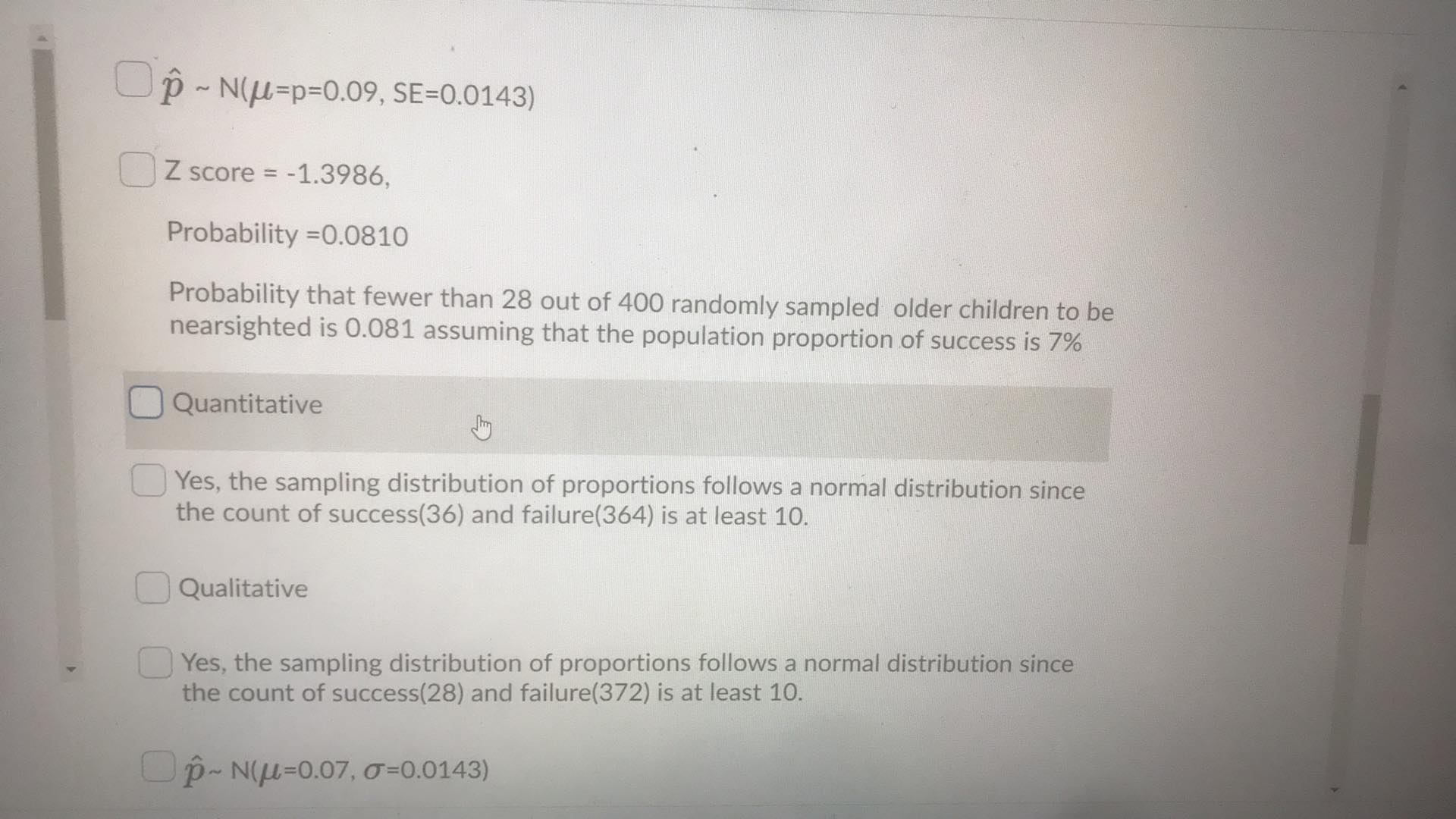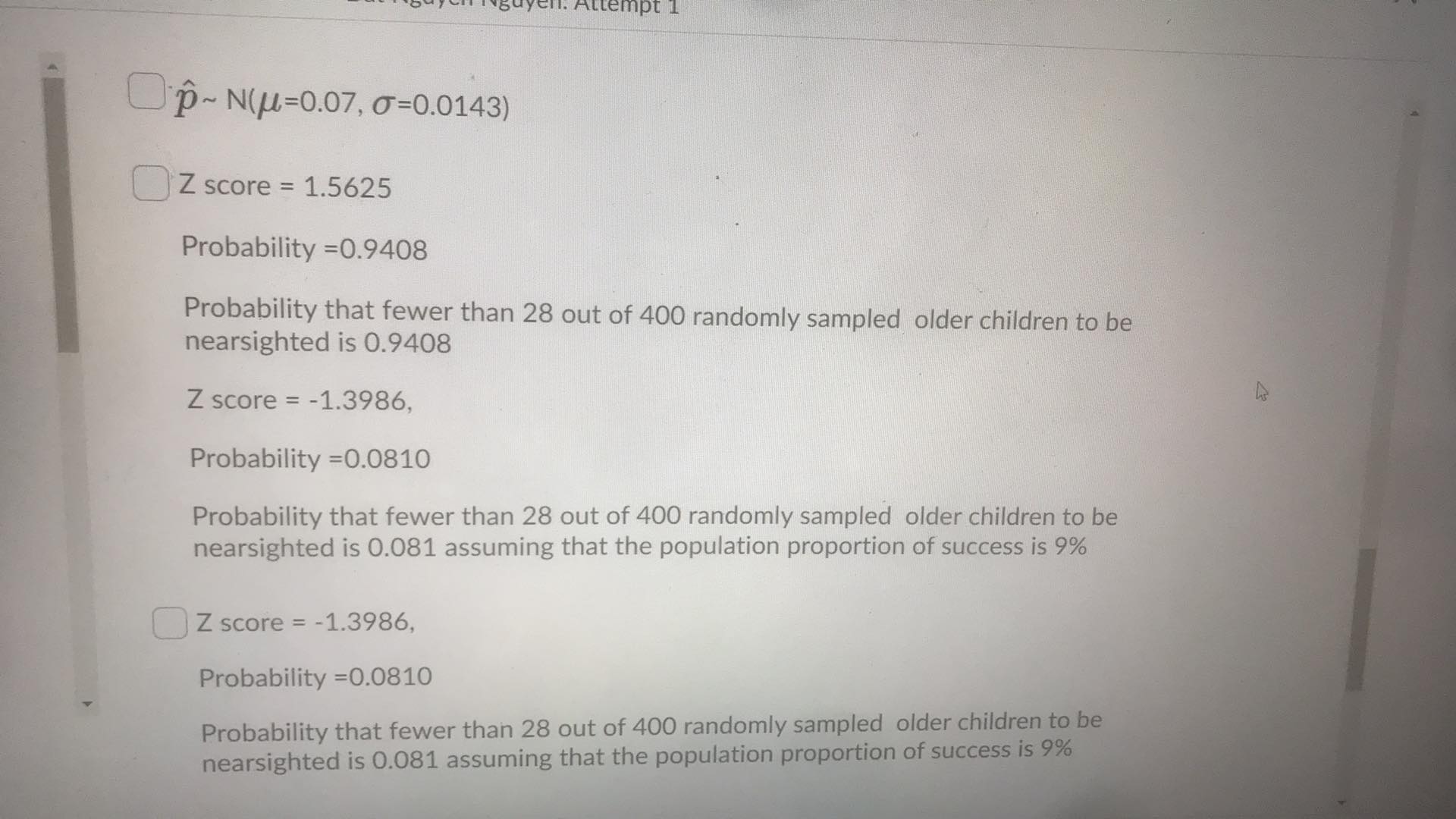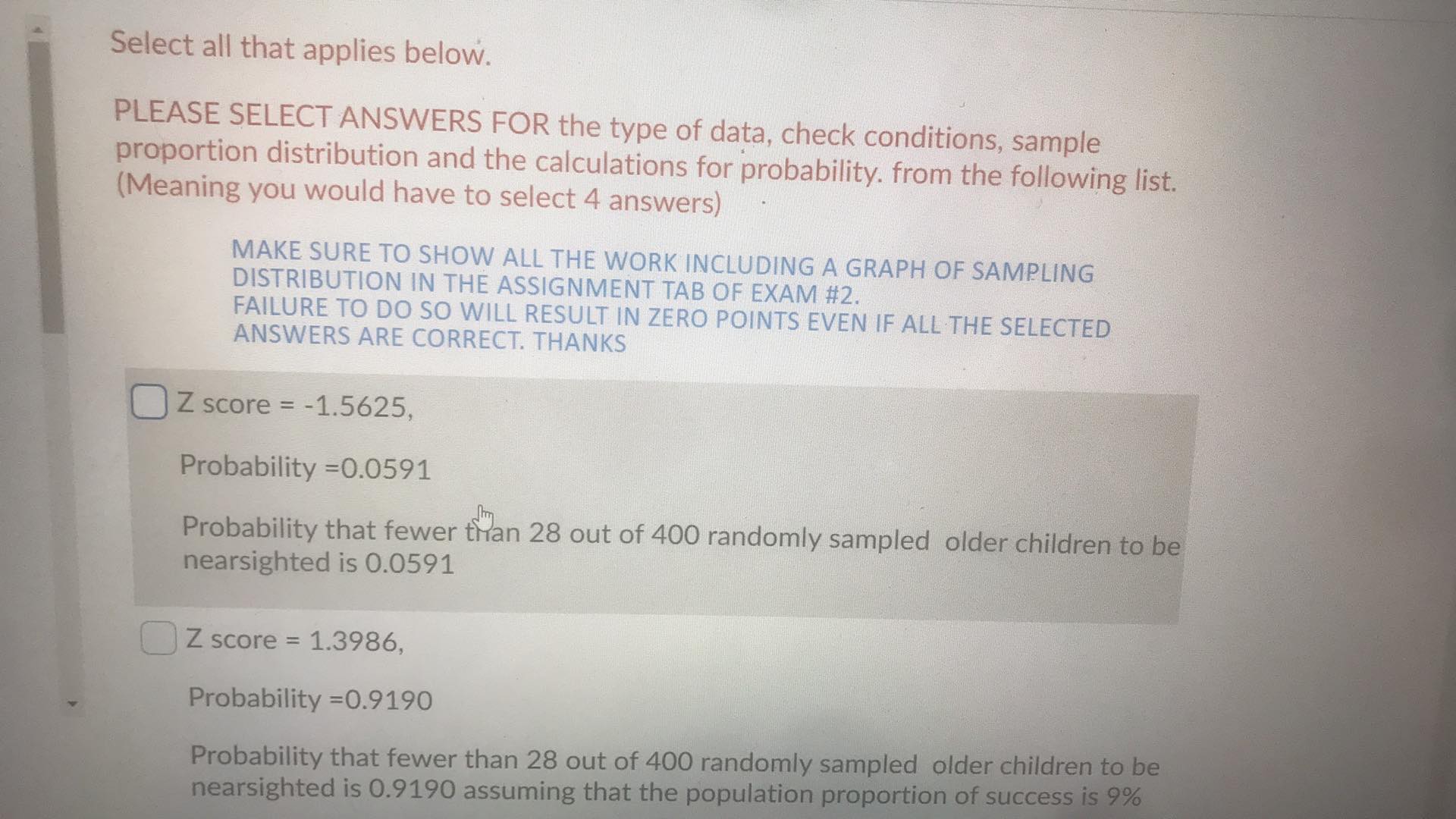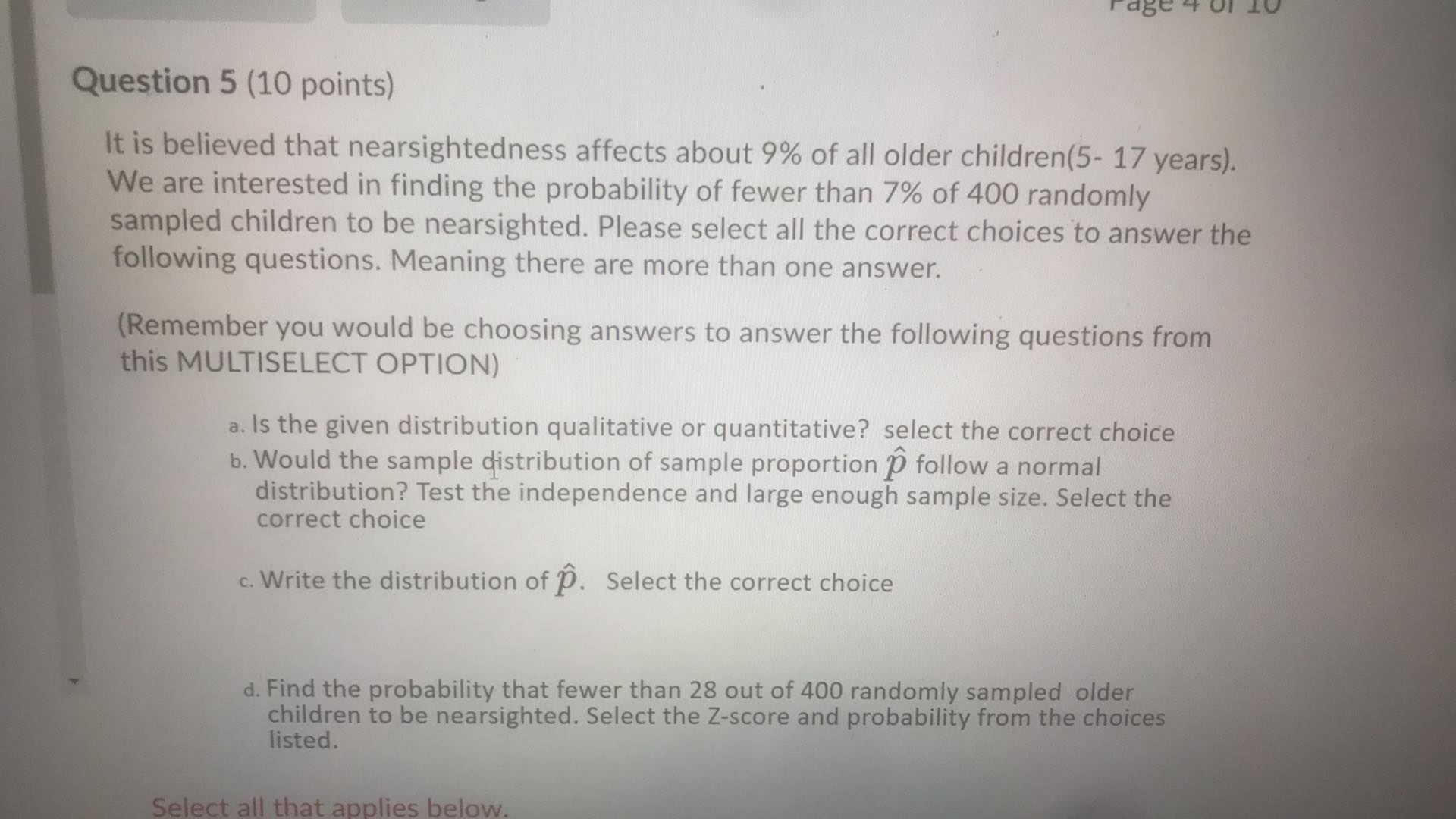Op ~ N(J=p=0.09, SE=0.0143) Z score = -1.3986, Probability =0.0810 Probability that fewer than 28 out of 400 randomly sampled older children to be nearsighted is 0.081 assuming that the population proportion of success is 7% Quantitative Yes, the sampling distribution of proportions follows a normal distribution since the count of success(36) and failure(364) is at least 10. Qualitative Yes, the sampling distribution of proportions follows a normal distribution since the count of success(28) and failure(372) is at least 10. Op~ N(J=0.07, 0=0.0143)Attempt 1 Op~ N(M=0.07, 0=0.0143) OZ score = 1.5625 Probability =0.9408 Probability that fewer than 28 out of 400 randomly sampled older children to be nearsighted is 0.9408 Z score = -1.3986, Probability =0.0810 Probability that fewer than 28 out of 400 randomly sampled older children to be nearsighted is 0.081 assuming that the population proportion of success is 9% Oz score = - 1.3986, Probability =0.0810 Probability that fewer than 28 out of 400 randomly sampled older children to be nearsighted is 0.081 assuming that the population proportion of success is 9%Select all that applies below. PLEASE SELECT ANSWERS FOR the type of data, check conditions, sample proportion distribution and the calculations for probability. from the following list. (Meaning you would have to select 4 answers) MAKE SURE TO SHOW ALL THE WORK INCLUDING A GRAPH OF SAMPLING DISTRIBUTION IN THE ASSIGNMENT TAB OF EXAM #2. FAILURE TO DO SO WILL RESULT IN ZERO POINTS EVEN IF ALL THE SELECTED ANSWERS ARE CORRECT. THANKS Z score = -1.5625, Probability =0.0591 Probability that fewer than 28 out of 400 randomly sampled older children to be nearsighted is 0.0591 OZ score = 1.3986, Probability =0.9190 Probability that fewer than 28 out of 400 randomly sampled older children to be nearsighted is 0.9190 assuming that the population proportion of success is 9%Question 5 (10 points) It is believed that nearsightedness affects about 9% of all older children(5- 17 years). We are interested in finding the probability of fewer than 7% of 400 randomly sampled children to be nearsighted. Please select all the correct choices to answer the following questions. Meaning there are more than one answer. (Remember you would be choosing answers to answer the following questions from this MULTISELECT OPTION) a. Is the given distribution qualitative or quantitative? select the correct choice b. Would the sample distribution of sample proportion p follow a normal distribution? Test the independence and large enough sample size. Select the correct choice c. Write the distribution of P. Select the correct choice d. Find the probability that fewer than 28 out of 400 randomly sampled older children to be nearsighted. Select the Z-score and probability from the choices listed. Select all that applies below










